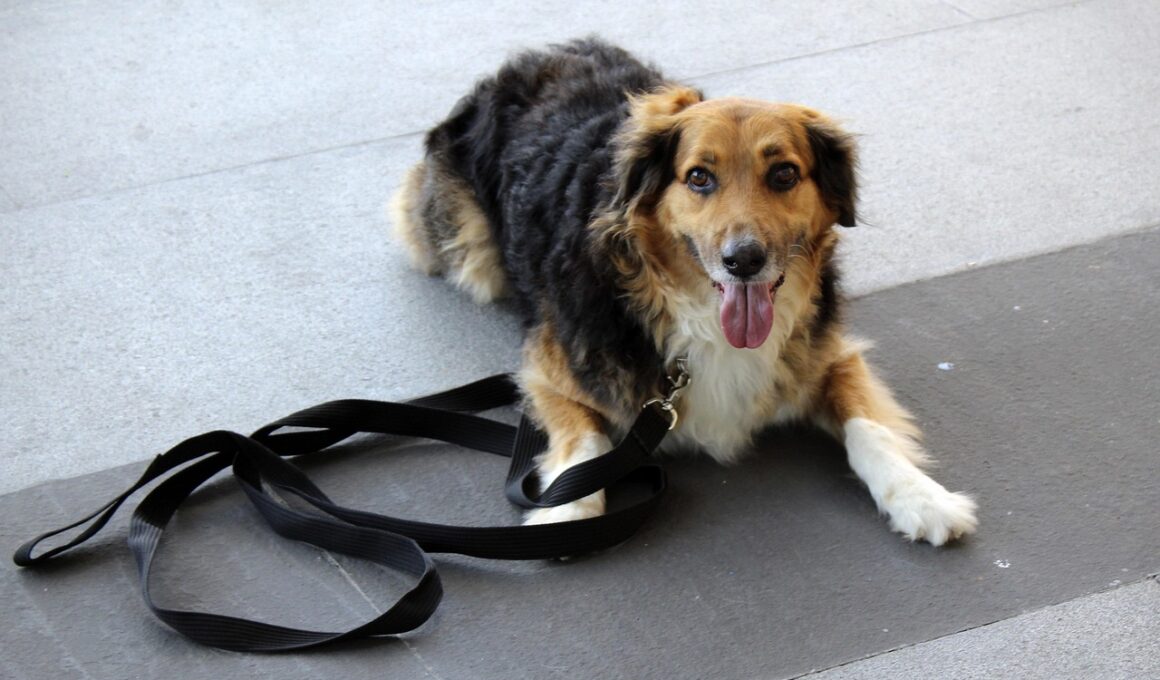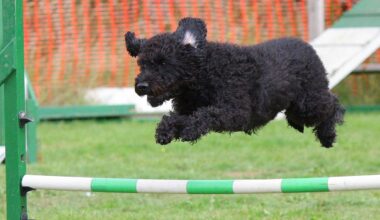How to Make Voice Commands Work in Noisy Environments
Training your dog using voice commands can be an incredible way to enhance communication. However, when you’re in a noisy environment, your dog’s ability to respond can be significantly hampered. One effective method to tackle this issue is to practice in various outdoor and indoor settings that have distractions. Start with quiet areas and progressively increase noise levels. This exposure helps your dog become accustomed to listening to your commands amid louder conditions. Gradually introducing distractions while maintaining focus is crucial. Use treats or praise as a reinforcement to reward good behavior during training. Showing clear and consistent signals will get your dog’s attention, enabling them to better understand what you expect. Training in a controlled environment at first gradually builds confidence in both you and your dog. Ensure to repeat commands consistently and use a firm but pleasant tone. Avoid yelling over background noise because it reduces command clarity. Communicate with your dog calmly instead of resorting to frustration, as this enhances trust and willing cooperation. Over time, your dog will learn to focus on your voice, even when the noise levels are higher.
Another effective technique involves teaching your dog to associate commands with visual cues. This method can greatly benefit your dog in crowded areas where voice commands might be less effective. By using hand signals in conjunction with voice commands, you reinforce understanding and create a multifaceted communication approach. Start your training by pairing the voice command with a simple hand signal. For example, when giving the sit command, use a hand signal in tandem. After your dog learns the association, gradually decrease verbal prompts while maintaining hand signals. Continue rewarding successful responses with treats and affirmative praise to solidify their learning. Visual cues can cut through the noise, allowing your pet to pick up on your direction quickly. The combination of auditory and visual signals creates a redundant communication system that your dog can rely on regardless of the distractions present. Additionally, practicing in various settings will help your dog differentiate cues in new environments. Eventually, this teaching strategy enhances your dog’s ability not only to respond in noisy places but also increases their overall engagement during training sessions.
Using Positive Reinforcement
Positive reinforcement plays a significant role in effective training. This technique works well in noisy environments because it encourages your dog to focus on you rather than distractions. When your dog successfully responds to your commands amidst noise, reward them immediately with treats or a toy that they love. This creates a positive association with listening to you, even when external noises can be overwhelming. Consistent reinforcement informs your dog that responding promptly increases their chances of receiving rewards, fostering a willingness to engage in training. It’s important to balance rewards with clear commands. The more your dog learns how behavior correlates with positive reactions, the more motivated they will become to listen to you. This method builds a strong training foundation and cultivates a trusting relationship between you and your canine friend. Additionally, start with easier commands at first, gradually increasing difficulty. This strategic approach happens according to the noise environment and your dog’s growing confidence. Remember that each dog is unique and may respond differently, so adjusting your techniques based on your individual dog’s temperament will yield the best results.
Another strategy to improve command responsiveness in noisy areas is to manage your dog’s energy levels. Nervous or overly excited dogs may find it difficult to focus on commands, especially when there are distractions around. Engaging in a short workout or playing with your dog before training can help calm them down, making them more receptive to voice commands. Activities such as fetch, tug-of-war, or a brisk walk can funnel excess energy into fun playtime. After an energy release, your dog will be more at ease and focused during training sessions. This way, they can listen more attentively despite surrounding noise or commotion. Consider incorporating calm, end-of-the-day training sessions that focus on voice commands without external interruptions. Make sure to select the proper time for both you and your dog, as patience and timing play essential roles in successful training sessions. Gradually introduce distractions as your dog’s comfort level increases, ensuring to keep energy levels in check. Always provide plenty of breaks during training sessions to prevent overstimulation, ensuring your dog remains calm while learning to listen effectively.
Creating a Training Schedule
Establishing a consistent training schedule is essential in teaching your dog to respond correctly in noise-laden areas. Consistency builds habits, and habits foster behaviors that’ll help your dog adapt to the chaos of a busy environment. Devote specific times each day to train your dog, keeping sessions short but frequent. Training in increments helps maintain your dog’s interest and focus. Ideally, opt for multiple short training sessions lasting around 5 to 10 minutes rather than a single lengthy session. Altogether, this keeps both you and your dog engaged throughout the learning process. Experiment with times of day to find the periods when your dog is most alert. For example, some dogs are more receptive in the morning, while others might be better later in the day. Document progress to observe changes, and adjust routines as needed based on your dog’s responsiveness. Moreover, aim to integrate training sessions into daily routines. For instance, utilize meal times as opportunities for command practice tied to food rewards. Overall, a structured schedule combined with relevant reward systems endows your dog with a clearer understanding of achieving desired actions.
In addition to these strategies, consider socializing your dog to different environments that involve various levels of background noise. Regularly exposing your dog to different settings, such as parks, crowded streets, or friends’ homes, prepares them for any level of distraction. Proper socialization allows them to adapt to new noises and people, which helps lessen anxiety in loud settings. When first introducing your dog to new environments, monitor their comfort and establish close connections. Praise and reward them for calm behavior amid new sounds. Gradually increase your working distance from distractions while maintaining commands and cues. This gradual desensitization facilitates heightened confidence when responding to commands in noisy situations. Ensure these socialization excursions are frequent and varied, as each situation could present unique challenges but yield valuable training outcomes. Over time, your dog will learn to navigate these experiences without becoming overwhelmed or distracted from your voice commands. Regular outings combined with exciting training sessions will strengthen the bond between you and your dog as you tackle their responses together. Socialization is as much about enjoying new experiences as it is regarding effective training methods.
Conclusion
To conclude, utilizing effective voice commands in noisy environments can be accomplished by employing various training techniques tailored to your dog. Start with familiarization, mixed with visual cues and positive reinforcement to ensure a strong foundation. Encourage energy management and establish a training schedule that encourages adaptability and consistency. Integrating socialization experiences helps lessen distractions in high-noise situations and enriches overall responses to commands. Overall, maintaining a calm, patient, and engaging approach will significantly impact your dog’s learning. Remember, every dog is unique; thus, adapting strategies based on your dog’s specific temperaments and characteristics will yield the most successful outcomes. With hard work, dedication, and love, you will witness your dog flourish in their capabilities to respond effectively to commands even in chaotic environments. Ultimately, the bond between you and your dog strengthens and evolves as communication fosters reliability, understanding, and, most importantly, joy in shared activities. Always celebrate their successes, big and small, to encourage a lifelong positive attitude. Implementing these techniques will undoubtedly enrich your training experience, leading to a happier, well-trained dog that listens amidst the noise.
In summary, employing various effective techniques can ensure that your dog responds reliably in noisy settings. Among the key concepts are familiarizing your dog with diverse environments, combining visual cues, and providing consistent positive reinforcement. Building a supportive training routine can also enhance your dog’s focus and reduce distractions during training sessions.


